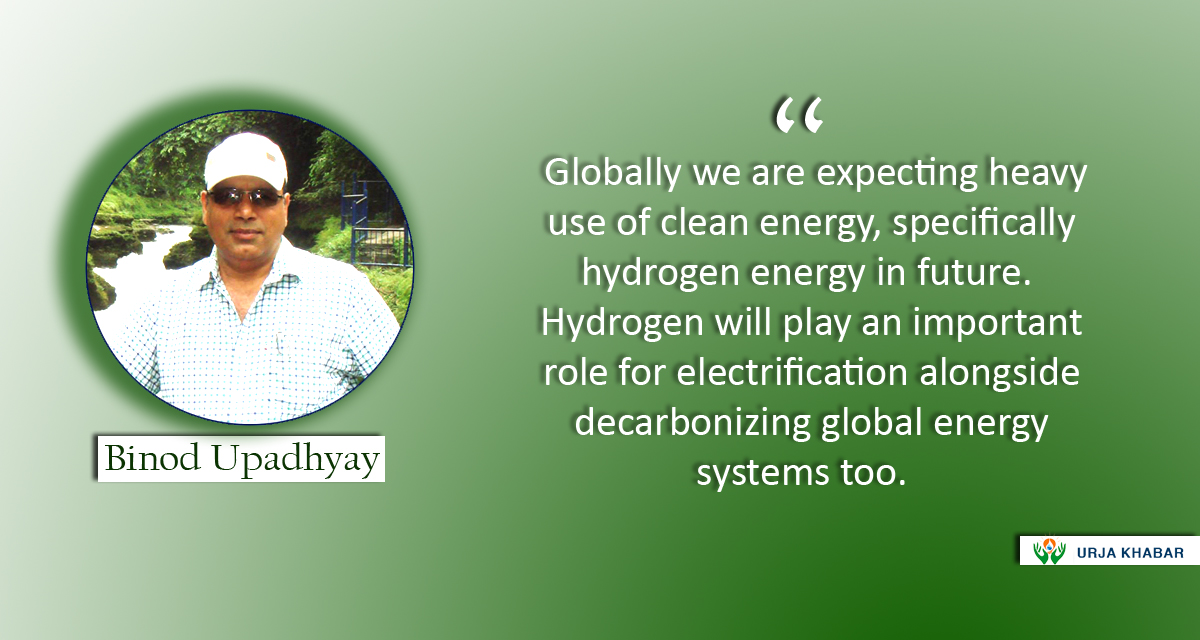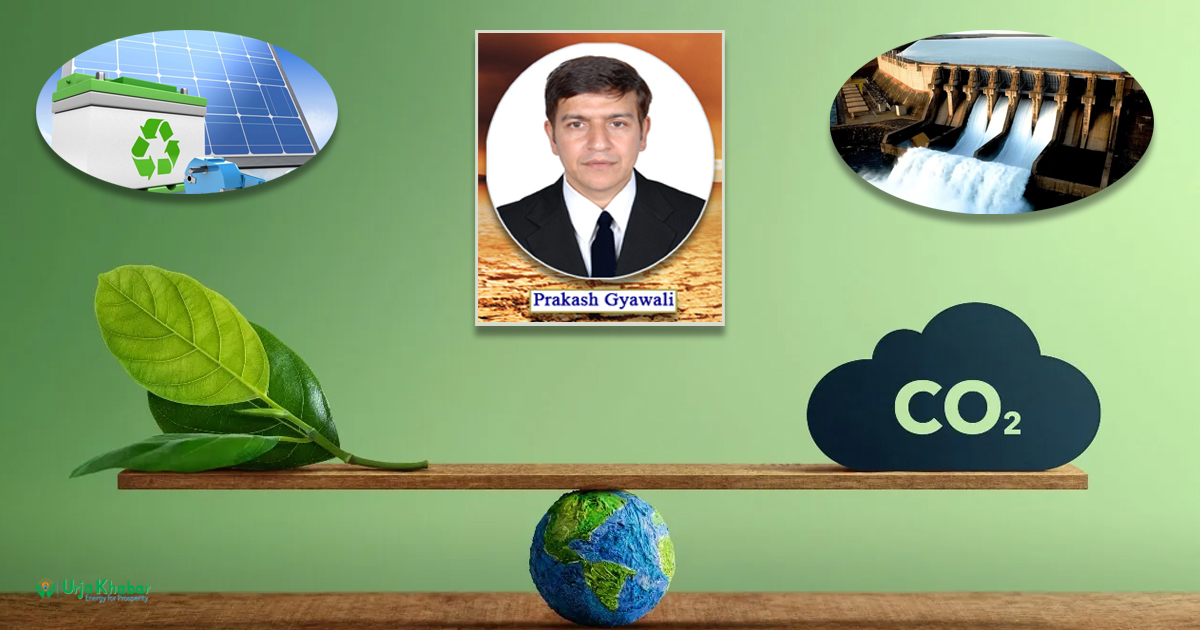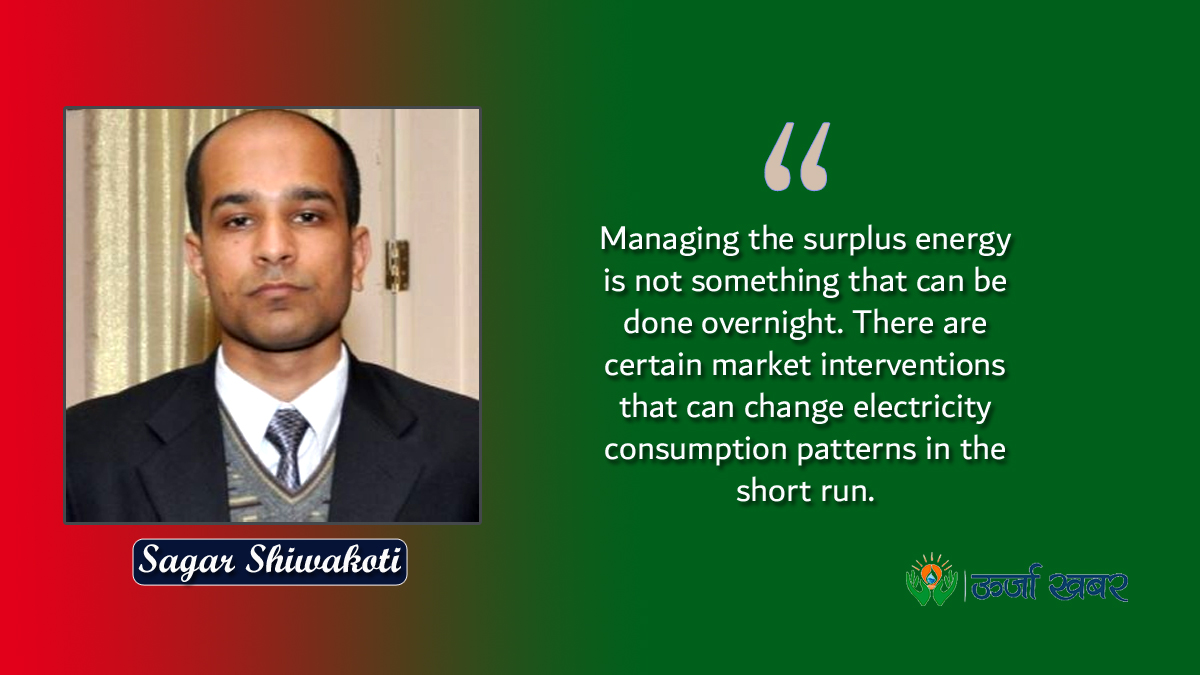Energy Update
Changing Energy Sector Dynamics and Financing in Energy Infrastructure

The energy sector in Nepal has historically been characterized by a limited power supply, inadequate infrastructure, and a high reliance on traditional biomass energy sources. However, there have been efforts in recent years to develop the sector and increase access to electricity. The government of Nepal has launched several initiatives to improve the energy situation in the country, including the National Energy Crisis Reduction and Electricity Development Decade Plan, which aims to increase the country's electricity generation capacity to 15,000 MW by 2030.
The private sector has proven its instrumental role in the Nepalese energy sector and, more precisely, in the generation segment. Taking the NEA data of 17th April, IPP generated 9,575 MWH, and Nepal Electricity Authority and its subsidiary generated 9,131 MWh, which itself is more than 50%. Private sector investments in Nepal's energy sector have delivered impressive outcomes, with 1,300 MW plus generating power, 3,000 MW plus of under-construction projects, and 15,000 MW plus of projects at different stages of development. Similarly, NEA and its subsidiary and international developers are also participating in energy generation in a larger way and investing in mega projects like Arun III, Lower Arun, West Seti, SR 6, Upper Arun etc. The government has provided various incentives and support mechanisms to encourage investment in the energy sector.

In addition, efforts have been made to improve energy access in rural areas through the implementation of off-grid and mini-grid systems, as well as through the distribution of improved cookstoves and other clean energy technologies.
Despite these efforts, there are still several challenges and complex dynamics facing the energy sector in Nepal, including increasing dominance, insufficient investment in transmission and distribution infrastructure, a lack of access to finance for energy projects, and the need for better policy and regulatory frameworks to attract private sector investment. However, with continued investment and support, the energy sector in Nepal has the potential to contribute significantly to the country's economic development, regional energy integration, help in the energy transition of South Asia, especially India and Bangladesh, and energy security.

The Changing Energy Sector Dynamics: Increasing Dominance, Regulatory Capture to Development Model
Nepal's energy sector dynamics are evolving towards a greater emphasis on generation, electrification, cross-border energy trade, private sector participation, increasing regional involvement, and energy diplomacy. These changes are driven by the country's natural resource potential, regional energy security concerns, net zero commitment, monopsony thought processes, and the need for sustainable and inclusive energy development and energy transition. In this journey, there is some complex dynamism, which ultimately derails the development of the energy sector in Nepal if it is properly analyzed, justified, corrected, and managed.
Nepal Electricity Authority (NEA), being a state-owned utility, enjoys a full monopoly in Nepal’s energy market. It is the only entity licensed to enter into domestic and cross-border trading. Similarly, it owns all transmission and distribution lines in the country. It is the only authority to sign Power Purchase Agreement (PPA) with private sector power producers. The domination of a single entity in generation, transmission, trade, and distribution has historically confined the growth of the energy sector in Nepal. Of late, the circumstances have risked the spillover of huge amounts of energy due to the lack of required transmission and energy trading mechanisms. Despite the pressure built up by the private sector to enter into transmission and trade, the NEA doesn’t seem to welcome the approach. Rather, it is putting efforts into creating a narrative that NEA is the only successful entity in taking over all critical components of energy, such as generation, transmission, trade, and distribution. International best practices, however, says that the state and state entities should function only as regulators and refrain from taking over the critical components.
The private sector efficiently manages such components. Given the strong technical expertise, financial and human resources, the private sector can effectively manage the energy trading. Hence, NEA should ideally be monitoring the fair competition among the private sector in energy trade and transmission line mechanisms.
NEA enjoys regulatory support from the government and its agencies. However, the Electricity Regulatory Commission (ERC) was created to regulate generation, transmission, trade, and distribution. NEA participates in all energy-related policy discussions as a technical member. The practice has resulted in the development energy policies and regulations in favor of NEA. NEA could not build transmission lines on time (Solu Corridor, Udipur-Dordi Transmission Line, Marsyangdi Corridor, Trishuli Line, etc.). It has resulted in huge financial losses to many projects which would otherwise come into operation on time. Many projects, which have signed PPA with NEA, are still struggling to get assurance from NEA on transmission lines. On top of that penalty and compensation paid to the developer in case of NEA default is minuscule compared to the loss they suffer. Despite all of these problems, ERC is in no position to take any action on the regulated entity.
Similarly, different dedicated institutions were created in the past for the development of the energy sector in an efficient way. Rastriya Prasharan Grid Company Limited (RPGCL) was created as part of unbundling NEA. It was supposed to be the national grid company that develops and operates transmission infrastructures (instead of NEA). However, no transmission assets were transferred to RPGCL from NEA, and it is unable to build any transmission line. Its utmost focus is on sourcing resources from the Government treasury, unlike the objective of bringing resources from different sources and instruments and making the company sustainable. Similarly, Vidhyut Utpadan Company Limited (VUCL) was conceptualized as a spin-off of the generation part from NEA. It was supposed to develop generation projects on its own and, mix projects having superior return potential with the less attractive projects and, provide a justifiable return to the investors, source financing from innovative financial instruments. But in reality, it became a middle layer in creating a project-level SPV. Both companies have NEA representation on the Board and depend on NEA’s leadership direction for major decisions. Here, both institutions were becoming a cost center for the government.
Energy Sector Financing: The Draining Well
The financing landscape of Nepal's energy sector is increasingly challenging, resembling a draining well. Several factors contribute to this situation, including the nearing level of directive lending, exploitation of minority shareholders through right share offerings, misconceptions surrounding foreign investment, and questionable project development practices.
i. Directive Lending
The lending practices for hydropower projects in Nepal are primarily governed by directives from the Nepal Rastra Bank (NRB), the country's central bank. According to the monetary policy, commercial banks are mandated to allocate a minimum of 10 percent of their total loan portfolio to the energy sector by mid-July 2024 and 6 percent by mid-July 2023. Based on the current data, it is expected to reach the set limit by the given time, and in previous instances of deferment of regulatory provision, the appetite in the banking sector is not so much encouragement. This definitely hinders the energy sector development in the coming years, as the recent power purchase agreement of 3,000 MW of PROR and 1,500 MW of ROR projects itself requires around Rs. 650 Bn. of debt funding. This situation highlights the draining the financing sources and the urgency of exploring alternative approaches and financing modality that complements conventional financing.
ii. All alignment towards Contractual saving
In recent years, there has been a growing trend of utilizing institutional investors' contractual savings, such as the Employee Provident Fund and Citizen Investment Trust, to finance the energy sector in Nepal. This is evident in government reports and plans, which highlight these savings as a significant source of investment for major projects like Budhigandaki, Dudhkoshi, and Upper Arun. Institutional investors are attracted to the energy sector because it offers the potential for consistent, long-term cash flows that align with their long-term liabilities. Energy projects typically benefit from long-term power purchase agreements (PPAs), ensuring a reliable and predictable revenue stream. However, it is important to recognize that overconcentration of investments in a single sector poses risks to retirement funds and deviates from the principle of sectoral diversification. Therefore, it is crucial to carefully consider and balance investment decisions to maintain a diversified portfolio. It is essential to avoid exhausting the financing sources in the near future by exploring alternative investment opportunities.
iii. Right is not always the right
The concept of "right share" typically refers to the pre-emptive rights given to existing shareholders to purchase additional shares in a company. But, the recent trend in the right offering by the hydropower companies shows that the instruments of Right share have been widely misused. Developers often take advantage of the herd mentality that perceives right shares as always beneficial. However, the reality is that the right shares may not be the most suitable option in all cases. One reason is when existing shareholders lack the financial capacity or desire to invest more capital into the company. Forcing them to participate in the right offering can impose an unnecessary burden and hinder their ability to make strategic investment decisions, especially when there is information asymmetry and uncertainty. It is important to recognize that the right share option may not always be suitable or appropriate in every situation and need to judge their financial health, project management, project quality, and loan repayment capability. We, collectively, need to work on streamlining the right use of the instrument for the betterment of the project and investors, especially retail investors.
iv. Wrong interpretation of foreign investment
Despite Nepal's efforts to attract foreign investment in the energy sector through various policies, regulations, and institutional frameworks, the results have been disappointing. Despite implementing measures like tax exemptions, streamlined procedures, and simplified approval processes, the perception of foreign investment in Nepal's energy sector continues to hinder its growth. Some segments of society associate foreign investment with ultra-nationalism, and attempts to address these misconceptions have had limited success. It is important to recognize and promote the value of foreign investment in driving the growth of the energy sector by bringing in much-needed capital, technology, expertise, and market access. However, the lack of understanding and proper assessment of the balance between local and international investment can further exacerbate the challenges in accessing finance and increase the cost of capital for small and medium-sized projects. If foreign investment is not encouraged, particularly in larger energy projects, the financing options for such projects will quickly dwindle, as they benefit from economies of scale, financial viability, and better access to finance.
v. Ongoing practices in Project Development
The development of large projects in Nepal requires significant capital and skilled human resources, including foreign contractors, consultants, and equipment. However, Nepal faces challenges due to the lack of domestic industries and a financial system capable of supporting such development. As a result, there is a substantial outflow of currency to procure services and equipment from abroad for energy projects. The current national discourse on using public funds for large projects, like Budhigandaki hydropower projects, is superficial and based on false assumptions. It is crucial to recognize that risking public funds in a single sector or project is not advisable. Furthermore, expecting the general public to invest in these projects is unrealistic, given the limitations of Nepal's financial system and small capital market. The development cost of the Budhigandaki project has exceeded $3 billion, accounting for approximately 8.2% of the national GDP. There is a concerning track record of existing instrumentalities when it comes to completing projects within budget and schedule, often experiencing significant cost and time overruns. Building mega projects with public funds would pose a significant risk to the country's economy and liquidity situation in the banking system. It would also have a severe impact on fund acquisition for medium and small-sized projects.
Silver lining: Regional Energy Dynamics and Alternative Sources of Energy
India is the third largest producer of electricity in the world. The national electric grid in India has an installed capacity of 407.8 GW as of September 2022. India's electricity sector is dominated by fossil fuels, particularly coal, which produces about three-quarters of the country's electricity. It is expected that non-fossil fuel generation contribution is likely to be around 44.7% of the total gross electricity generation by 2029–30. India has a surplus power generation capacity but lacks adequate fuel supply and power distribution infrastructure.
As a signatory to the Paris Agreement, India is also reducing power generation from coal to control the emission of greenhouse gases. India's thermal power plants are inefficient. Replacing them with cheaper renewable technologies offers significant potential for greenhouse gas (CO2) emission reduction. India's thermal power plants emit 50% to 120% more CO2 per kWh produced compared to average emissions from their European Union (EU-27) counterparts. The government plans to retire coal-based plants that are at least 25 years old and contribute to excessive pollution. India has committed to install 275,000 MW of renewable energy capacity by 2027, dominated by static power generation sources like solar and wind power.
Similarly, Bangladesh has one national grid with an installed capacity of 25,700 MW as of July 2022. The electricity sector in Bangladesh is heavily reliant on natural gas, and natural gas reserves are expected to expire soon. The country plans to increase its renewable energy share to 17% by 2041 under its Intended Nationally Determined Contribution (INDC) commitment to reduce greenhouse gas emissions by 5% by 2030. Bangladesh will need an estimated 34,000 MW of power by 2030 to sustain its economic growth of over 7 percent.
Under such circumstances, Nepal’s energy has huge potential to be evacuated to India and Bangladesh markets. The government needs to sincerely work on regulatory issues to materialize this in the near future and be honest in energy diplomacy.
Energy integration: Making energy affordable
The need of the hour is to make energy prices competitive and acceptable to regional markets. One of the approaches is to ensure grid quality is maintained at all times. For this purpose, power plants must make balancing energy available where needed within seconds. If demand exceeds power generation capacity, electricity must be quickly fed into the grid (positive balancing energy). The small power system is less resilient towards changes in load and generation. Larger the system, the more flexible it is. Recent years have seen exponential growth of affordable new energy technologies like solar and wind. The growth is sustainable only if more stable power generators like hydropower are integrated into the system or only if there is larger grid integration. By mixing a larger percentage of cheaper energy in the mix, energy becomes more affordable.
Energy integration is one of the key concerns for making energy affordable in the region. The bilateral energy trade between India - Nepal, India – Bangladesh, and India - Bhutan has already started, and similar trade with Sri Lanka is in the process. In fact, open and mutual trade between Nepal, India, Bangladesh, and Bhutan needs to happen for the growth of the sector in the region, and energy as a commodity in Nepal must be competitive in the regional market.
Energy Infrastructure Financing: The Urgency in Innovation
Energy infrastructure financing in Nepal is facing an urgent need for innovation. The current financing mechanisms and practices have proven insufficient in meeting the growing demands of the sector. To overcome these challenges, it is crucial to explore new avenues and adopt innovative approaches to mobilize funds and accelerate energy infrastructure development.
i. Larger project investment
Attracting large investors and financiers is indeed crucial for the development of larger projects in Nepal. To achieve this, collaboration between the government and the private sector is essential. The government can play a role in de-risking projects by streamlining licensing and regulatory requirements and expediting the signing of Project Development Agreements (PDAs). By creating a favorable investment environment, the government can instill confidence in potential investors. Collaboration with the private sector is equally important. The government can partner with private entities to facilitate land acquisition for projects and provide hedging solutions to mitigate risks. Additionally, the government can explore the issuance of new and innovative financial instruments, both domestically and internationally, to attract investment. Foreign investors typically seek reliable partners and governments with a strong track record in capital-intensive projects. By demonstrating stability, transparency, and a commitment to supporting investors, the government can attract reputable foreign investors. Building strong partnerships with local companies can further enhance the attractiveness of projects.
ii. Private sector participation in Transmission and Trading
Private sector participation in the transmission sector holds great potential to attract the much-needed capital and expedite the development of transmission infrastructure in Nepal. This involvement can enable the country to harness its vast energy generation potential and integrate with regional markets more effectively. By allowing the private sector to participate in power trading, developers can align their projects with market dynamics and fully utilize the available resources. Independent Power Producers (IPPs) can enter into Power Purchase Agreements (PPAs) with trading companies, facilitating the exponential expansion of regional energy markets. Furthermore, including the private sector in transmission and trading activities can enhance the competitiveness and reliability of the power system. Private entities bring in expertise, innovation, and efficiency, thereby improving the overall performance of the sector. Overall, embracing private sector participation in transmission and trading will not only attract capital but also foster a more competitive, reliable, and integrated energy market. It is a key strategy for accelerating the development of Nepal's energy infrastructure and maximizing the utilization of its energy resources.
iii. Use of innovative financial instruments
Infrastructure development requires substantial capital, and innovative financial instruments can play a crucial role in bridging the investment gap, promoting sustainable development, and facilitating the transition to a low-carbon economy. These instruments can effectively reduce financing costs, enhance risk management, align incentives, and improve overall project efficiency. By doing so, they make infrastructure projects more attractive to investors and expedite the development of critical infrastructure worldwide.
Green Bond
Green bonds are pivotal in financing energy projects in Nepal and driving environmental sustainability, and achieving energy transition in the South Asia region. These specialized bonds are specifically designed to raise funds for projects with positive environmental impacts. In the context of the energy sector, green bonds offer a promising avenue to support clean energy development, combat climate change, and generate financial returns. The global green bond market has already surpassed USD 2.4 trillion and is projected to reach USD 5 trillion by 2025. Nepal's energy sector can tap into this growing market as an alternative funding source for clean energy initiatives. Issuing green bonds allows energy project developers and financial institutions to access a dedicated pool of capital from investors interested in supporting environmentally beneficial projects. The proceeds from green bond offerings in the energy sector can be directed towards various projects, including energy generation, energy storage systems, and initiatives to enhance energy efficiency in buildings and infrastructure. These projects contribute to the reduction of greenhouse gas emissions, reduce dependence on fossil fuels, and facilitate the transition to a low-carbon energy system. By embracing green bonds, Nepal's energy sector can not only attract investment but also make significant strides in environmental sustainability. It presents a valuable opportunity to align financial goals with environmental objectives, fostering a greener and more resilient energy landscape.
INVITs
Infrastructure Investment Trusts (InvITs) are crucial in facilitating direct investments in infrastructure, allowing individual and institutional investors to participate with small amounts of money. In the context of the energy sector, InvITs offer a viable avenue for asset monetization and financing additional energy projects in Nepal. By leveraging InvITs, energy projects like Kaligandaki, Kulekhani, and Middle Marsyangdi can be strategically monetized to generate funds that can be reinvested in developing other energy projects within the country initiated by Nepal Electricity Authority. This approach helps optimize the utilization of existing infrastructure assets and unlocks new opportunities for energy sector expansion. InvITs provide a structured platform for investors to pool their resources and gain exposure to a diversified portfolio of infrastructure assets. These trusts offer the advantage of professional management, transparency, and regular income distributions, making them an attractive investment option for both individual and institutional investors.
Commercial Blending/Hybrid Annuity
In the context of energy projects in Nepal, a commercial blending/hybrid annuity model can be employed to facilitate private sector participation and financing in larger storage projects, transmission lines, and distribution projects. This model can help address the capital-intensive nature of energy infrastructure development and ensure the timely completion of projects through private sector partial investment but full operational efficiency. Under the model for energy projects in Nepal, the government or the Nepal Electricity Authority can provide a predetermined annuity payment to the private sector developer, and the private sector developer is responsible for designing, constructing, operating, and maintaining the energy project. They contribute a portion of the project cost, typically in the form of equity investment. The remaining project cost is financed through debt, which is repaid by the annuity payments received from the government. This model helps distribute risks and responsibilities between the public and private sectors, with the private sector bearing construction and operational risks while the government bears demand and revenue risks. It allows the government to tap into private sector efficiencies, innovation, and capital, thereby accelerating project development. The fixed annuity payments provide financial stability to the private sector developer, reducing their exposure to revenue uncertainties. Overall, implementing a Commercial Blending/hybrid annuity model in energy projects can enhance private sector participation, optimize financing resources, and expedite the development of Nepal's energy infrastructure, ultimately contributing to the country's energy security and economic growth.
What Next?
With the changing dynamics, regional context, deregulation of the energy sector by the neighboring country, and innovation in financing and instruments, Nepal also should embrace a similar path. Firstly, the government of Nepal needs to develop and implement policies and regulations that create a favorable environment for clean energy financing. This includes policies that incentivize the development and adoption of clean energy technologies and remove barriers to investment. Clear and consistent regulatory frameworks can provide clarity to investors and encourage their participation in the clean energy sector. Second, the financial sector in Nepal needs to be strengthened to support clean energy financing. This includes developing financial products that are tailored to the needs of the clean energy sector and building capacity among financial institutions to evaluate and finance clean energy projects. Training and capacity-building programs can help financial institutions better understand the risks and opportunities associated with clean energy investments. Third, Capacity building and technical assistance are critical to enhancing the skills and knowledge of stakeholders involved in clean energy financing, including financial institutions, project developers, and government agencies. Providing training, workshops, and technical support can improve the understanding of clean energy technologies, project development, and financing mechanisms.
Fourth, the quality of project preparation needs to be improved to make clean energy projects more attractive to investors. This includes conducting thorough feasibility studies, developing strong business cases, and identifying and mitigating project risks. Well-prepared projects with robust financial models and risk mitigation strategies are more likely to attract investment. To attract investment, Nepal needs to develop a pipeline of bankable clean energy projects that are aligned with the country's energy and development goals. This involves identifying potential projects, conducting pre-feasibility assessments, and creating an enabling environment for project development. A diverse pipeline of projects across different clean energy sectors can provide investment opportunities for various types of investors. Encouraging private sector participation and the use of alternative financing can be an effective way to mobilize private capital for clean energy projects. This includes establishing transparent and efficient procurement processes, providing appropriate risk-sharing mechanisms, and ensuring a fair and equitable distribution of project benefits. Finally, it is important to establish robust monitoring and evaluation mechanisms to track the impact of clean energy financing initiatives and ensure that they are achieving their intended objectives. This includes measuring the environmental and social impact of clean energy projects and tracking progress toward national development goals. Regular monitoring and evaluation can provide valuable insights to improve the effectiveness and efficiency of clean energy financing programs.
By addressing these key reform areas, Nepal can create a more favorable environment for clean energy financing, attract investment, and accelerate the transition to a sustainable and low-carbon energy system. These efforts can contribute to achieving national energy goals, reducing greenhouse gas emissions, and promoting inclusive and sustainable development in the country.
Note: The views expressed in the article are explicitly stated as the personal views of the writer and are not representative of or endorsed by the organization he is associated with.
This article is taken from Urja Khabar Semi-annual Journal Publish on 16th June, 2023
Mr. khatiwada is the chief executive officer of Infrastructure Development Bank
Conversation
- Info. Dept. Reg. No. : 254/073/74
- Telephone : +977-1-5321303
- Email : [email protected]














